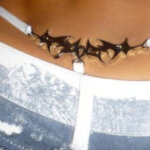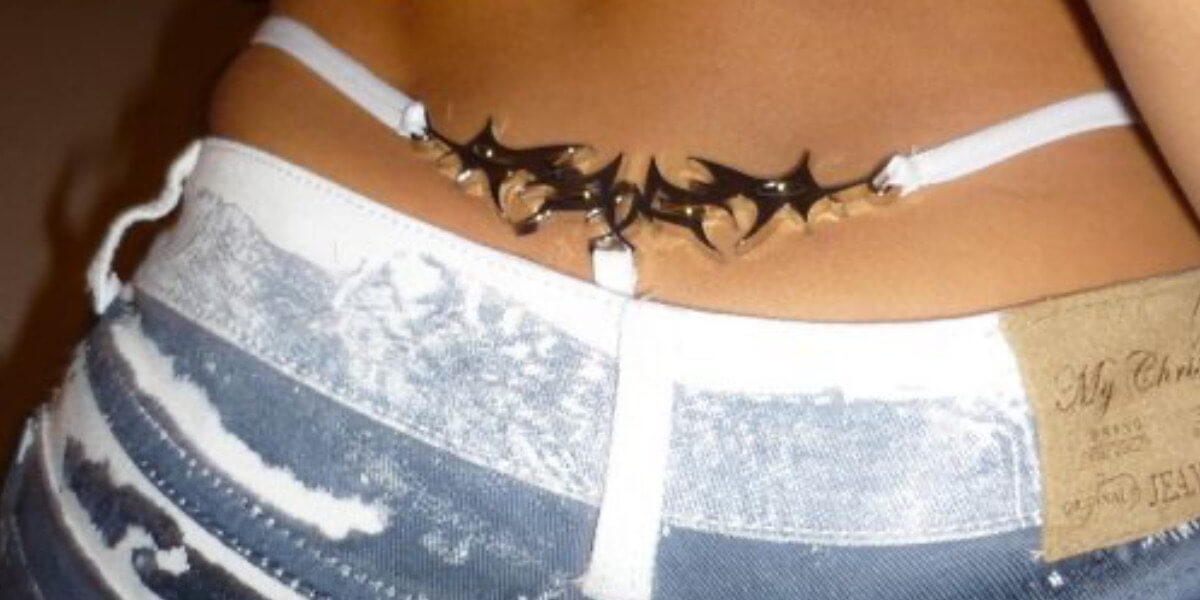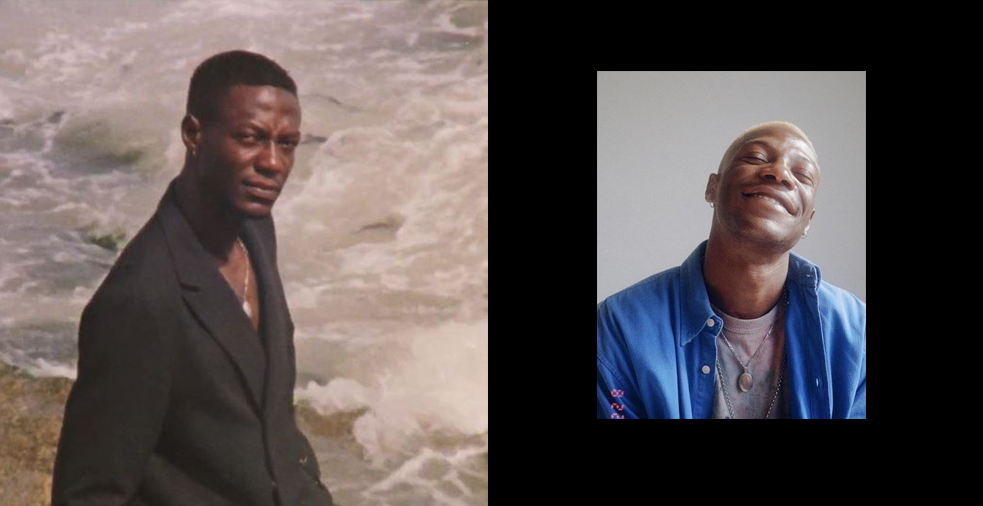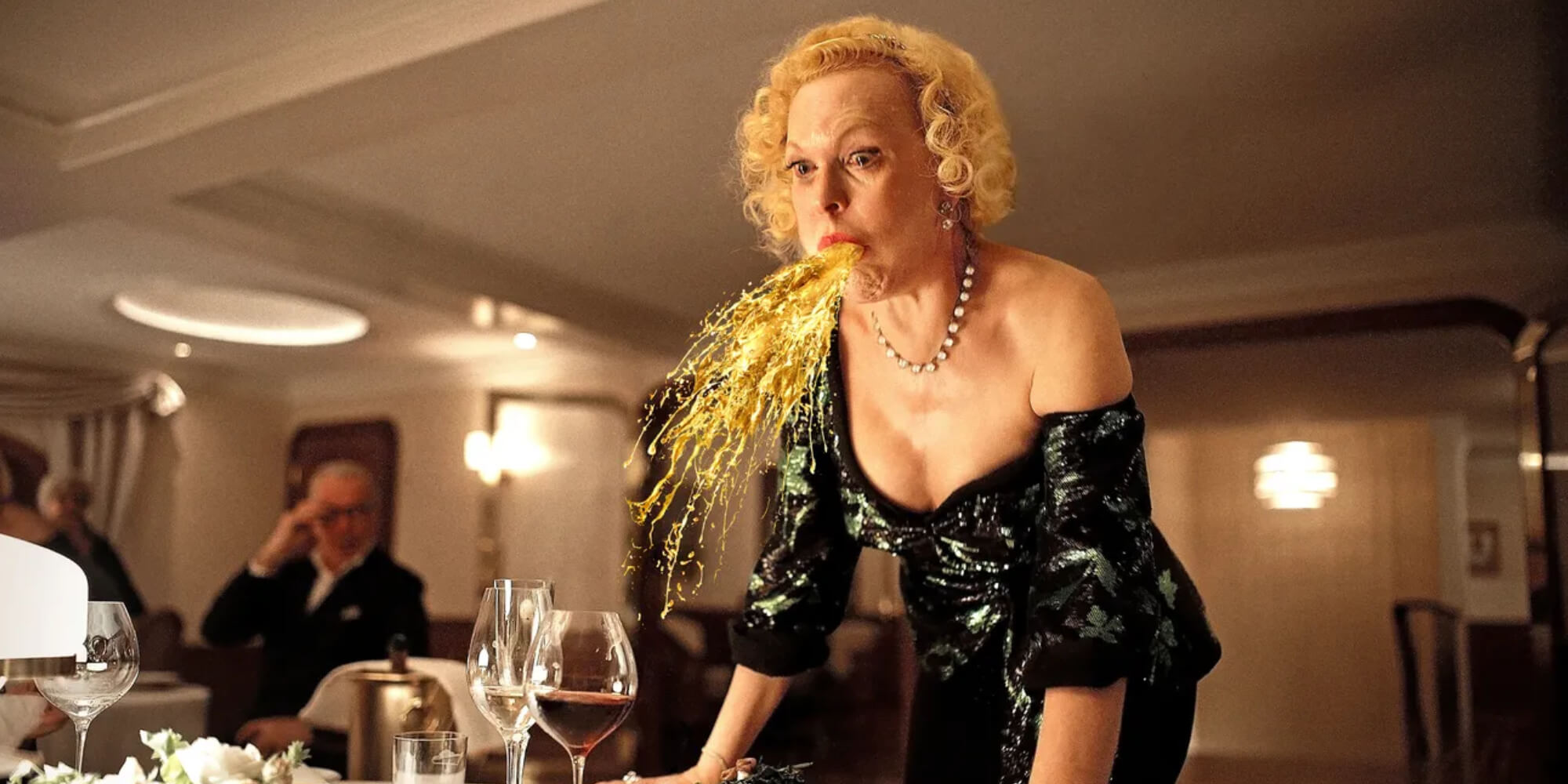Almost every fashion trend from the early ’00s has come back into vogue, including low-rise jeans and exposed thongs (much to the chagrin of many millennials). And our seemingly endless love affair with all things Y2K has also paved the way for the lower back tattoo revolution – the seeds of which have already sprouted on social media feeds everywhere. Instagram brands like Tank Air Studios and established fashion brands Paloma Wool have recently released temporary tramp stamp tattoos, and there are even Tramp Stamp-inspired thongs.
But calling the lower back tattoo tramp stamp does actually more harm than good “We don’t call it that in the tattoo industry – we just call it a lower back tattoo,” says celebrity piercer Brian Keith Thompson, owner of tattoo and piercing studio Body Electric in an interview. “But customers and the public know it by that name, which is just a derogatory term for a lower back tattoo.”
Hawaro Juul Petersen, founder and owner of Iron & Ink, explains in an interview that the term came about after the trend’s fall from grace and, in retrospect, negatively sexualised the trend. It’s hard to forget the quote from the 2005 film Wedding Crashers: “A tattoo on your lower back? Might as well be a bull’s-eye.” Even comedian and actress Amy Schumer has published a book called “The Girl With the Lower Back Tattoo”, in which she pokes fun at her own ink. But jokes aside, the slang carries negative connotations and undue stigma.
The lower back was the hot spot for body art in the 1990s and early 2000s, keeping with the style of the time. Pop star Christina Aguilera had one, as did Britney Spears. The lower back tattoo is typically centred on the lower back and small in design (hence the word “stamp”), with the ink visible just above the waist of low-rise trousers and under a crop top. In the early days, some of the most popular requests were butterflies or symmetrical tribal designs. Today, butterflies are still popular, but they are more minimalist, reminiscent of line art designs with a delicate aesthetic and negative space – the current body ink trend. Even a single, meaningful word in print or italics can make an appearance. It was essentially the feminine counterpart to the tribal tattoo that was becoming popular at the same time. Both tribal and ‘tramp stamps’ became very popular very quickly, and a lot of people got both very small and very large tattoos. As it was still frowned upon to have visible tattoos, especially for women, this became a great way to have a tattoo that you could still show off in a fun, sexy way or easily hide.
The style peaked in the late 1990s and early 2000s. A lot of people got it then, but requests for lower back tattoos disappeared. By 2008 to 2010, nobody was getting them.
The link between women’s sexual promiscuity and tramp stamps was so ingrained in the cultural dialogue of the 00s that, in 2013, there was a study by French psychiatrist Nicolas Guéguen examining whether women with tramp stamps had sex earlier (think: the media’s unwarranted obsession with Britney’s virginity). However, the ideas associated with lower back tattoos can have very real consequences. The study found that women with the tattoo placement were more likely to be propositioned by men and seen as promiscuous. It also revealed that men think women with tramp stamps are less athletic, less motivated, less honest, less generous, less religious, less intelligent and less artistic.
With deeply misogynistic roots, the reclamation of the lower back area and the “tramp stamp” tattoo label is being led by women and queer youth. The movement, if you will, goes hand in hand with the resurgence of the “hot and stupid” aesthetic, through which teenagers reclaim the once misogynistic stereotype used to infer promiscuity and a lack of intelligence. Together, the new-age feminists and the modern tramp stamp turn sexualisation on its head, empowering the next generation of radical left-wing feminists to reclaim the way their bodies are objectified.
The comeback of the tramp stamp gives us the opportunity to celebrate some of the most iconic styles of the 00s, but also to give a new lease of life to a previously taboo and highly sexualised area of the body. Of course, this can only happen with the continued dismantling of the systemic misogyny and slut-shaming that is still rampant in today’s society. With freshly inked tramp stamps on their backs and jeans that sit well below their hip bones, young people in 2023 are liberating the lower back.
Header Image by:




























